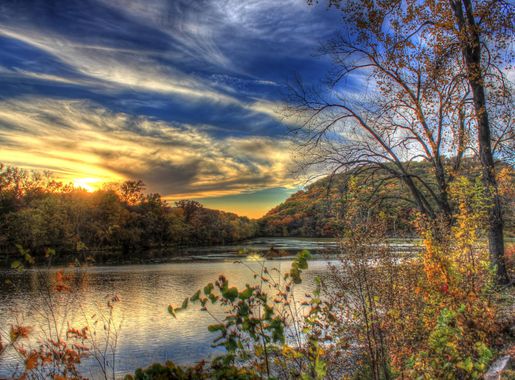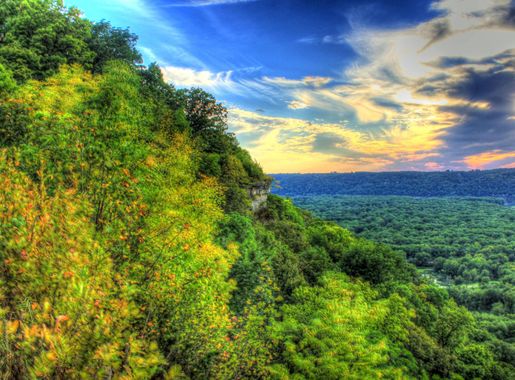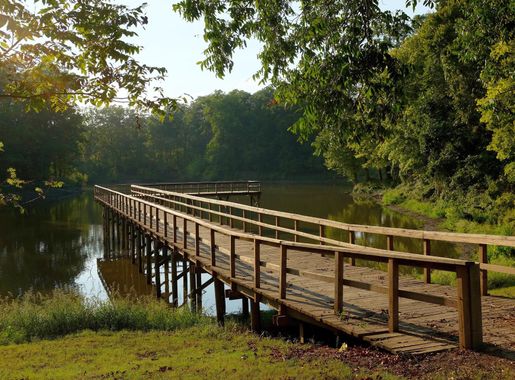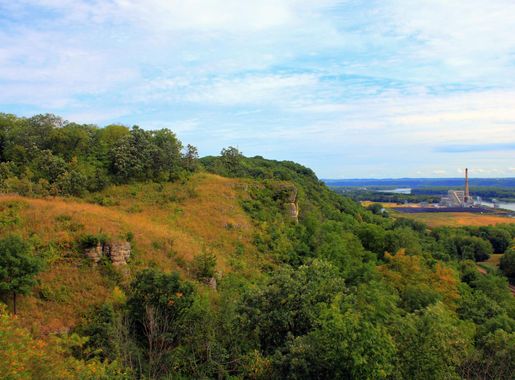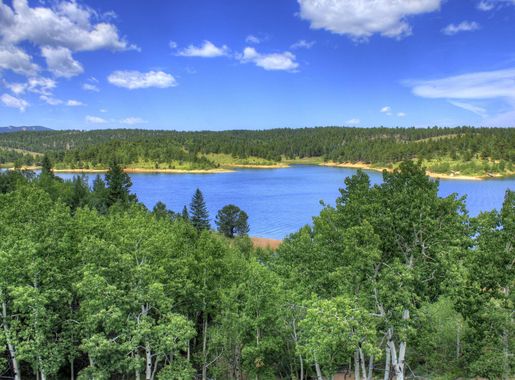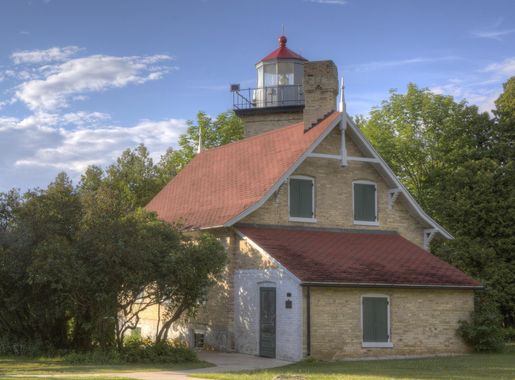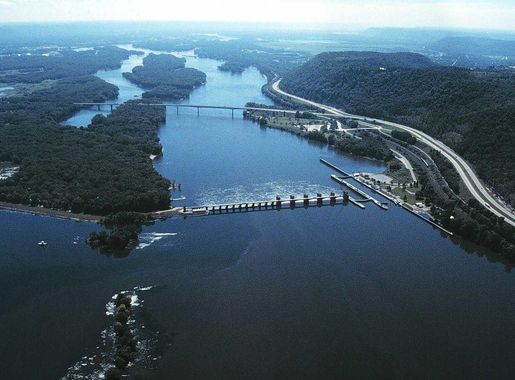
The Scenic Splendor of Great River Road in Wisconsin
Discover the breathtaking landscapes, charming river towns, and rich history along the Great River Road in Wisconsin.
Stretching alongside the mighty Mississippi River, the Great River Road in Wisconsin offers travelers an unparalleled scenic drive. This iconic route meanders through lush landscapes, charming river towns, and historic sites. It is a haven for nature lovers, photographers, and history buffs alike. As you journey along the Great River Road, you'll encounter numerous state parks, wildlife refuges, and breathtaking overlooks. Each stop provides a unique perspective of the river and its surrounding beauty. Venture into the quaint towns that dot the route, where you can explore local museums, antique shops, and cozy cafes. The Great River Road is not just about the views; it's also rich in cultural heritage. The area is steeped in Native American history and early American settlements. You can visit historical landmarks and learn about the region's past at various interpretive centers along the way. Whether you're on a leisurely drive or an adventurous road trip, the Great River Road in Wisconsin promises an unforgettable experience.
Local tips in Great River Road
- Visit in the fall for stunning foliage views that enhance the scenic drive.
- Stop by the Great River Road Visitor and Learning Center in Prescott for trip planning resources and exhibits.
- Take advantage of the numerous hiking and biking trails to fully immerse yourself in the natural beauty.
- Don't miss the Lock and Dam No. 4 in Alma for a fascinating look at river navigation.
- Try local cuisine at the small-town diners and restaurants along the route for an authentic taste of Wisconsin.
- Carry a pair of binoculars for bird watching, as the area is a prime spot for eagle sightings.
The Scenic Splendor of Great River Road in Wisconsin
Stretching alongside the mighty Mississippi River, the Great River Road in Wisconsin offers travelers an unparalleled scenic drive. This iconic route meanders through lush landscapes, charming river towns, and historic sites. It is a haven for nature lovers, photographers, and history buffs alike. As you journey along the Great River Road, you'll encounter numerous state parks, wildlife refuges, and breathtaking overlooks. Each stop provides a unique perspective of the river and its surrounding beauty. Venture into the quaint towns that dot the route, where you can explore local museums, antique shops, and cozy cafes. The Great River Road is not just about the views; it's also rich in cultural heritage. The area is steeped in Native American history and early American settlements. You can visit historical landmarks and learn about the region's past at various interpretive centers along the way. Whether you're on a leisurely drive or an adventurous road trip, the Great River Road in Wisconsin promises an unforgettable experience.
When is the best time to go to Great River Road?
Iconic landmarks you can’t miss
Perrot State Park
Experience the breathtaking landscapes and diverse wildlife at Perrot State Park, a must-visit destination along the Mississippi River in Wisconsin.
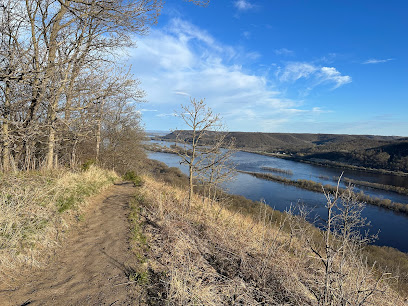
Wyalusing Hardwood Forest
Explore the serene beauty of Wyalusing Hardwood Forest, a prime nature preserve in Wisconsin filled with trails, wildlife, and breathtaking landscapes.
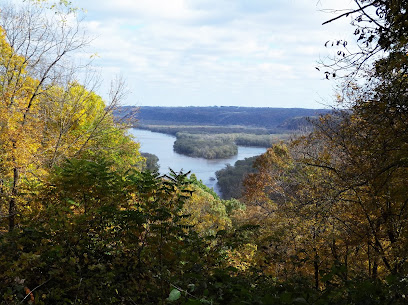
HIGHGROUND VETERANS MEMORIAL HISTORICAL MARKER #300
Explore the Highground Veterans Memorial in Black River Falls, a serene tribute honoring the bravery of U.S. veterans amidst Wisconsin's natural beauty.
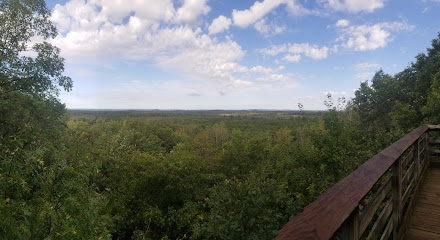
Great River Road Visitor and Learning Center
Discover the rich heritage of the Mississippi River at the Great River Road Visitor and Learning Center in Prescott, Wisconsin.

Rapides des Peres - Voyageur Park Historical Marker #266
Discover the serene beauty and historical significance of Rapides des Peres - Voyageur Park in De Pere, Wisconsin, a must-visit destination for history buffs and nature lovers.
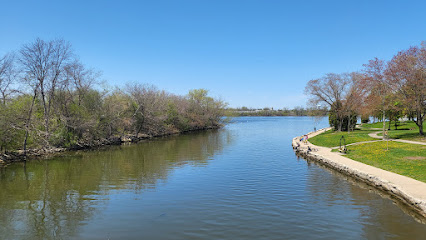
First Capitol Historic Site
Explore the rich history of Wisconsin at the First Capitol Historic Site, where the state's legislative journey began in scenic Belmont.
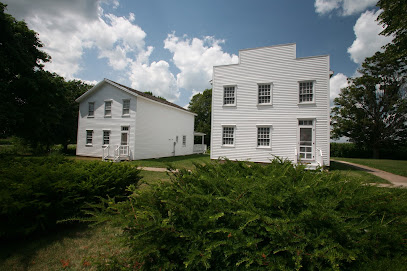
Great River Road Inns
Experience the warmth and charm of Great River Road Inns, a cozy bed & breakfast in Fountain City, Wisconsin, perfect for your scenic getaway.

Spirit of the Rivers Monument
Discover the Spirit of the Rivers Monument in Two Rivers, Wisconsin—a peaceful rest stop celebrating the cultural heritage and natural beauty of the region.
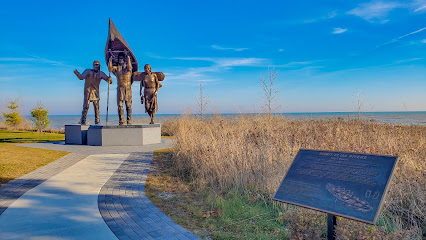
Wisconsin State Historical Marker #15: Old Stockade Site
Explore the Old Stockade Site, a historical gem in Superior, Wisconsin, offering a glimpse into the region's fur trading past amidst beautiful park scenery.
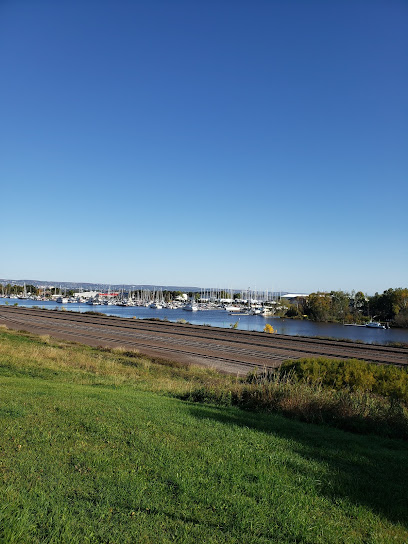
Great River Road Interpretive Center
Explore the natural and cultural heritage of the Mississippi River at the Great River Road Interpretive Center, a free museum in Genoa, Wisconsin.
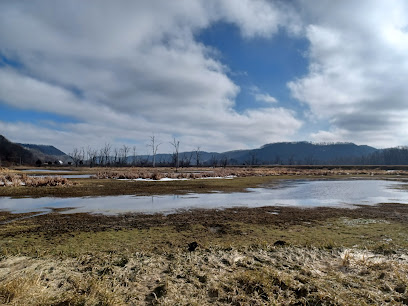
Wisconsin State Historical Marker 239: Heritage Hill State Park
Explore Wisconsin's rich heritage at Heritage Hill State Park in Green Bay, where history comes alive in a stunning natural setting.
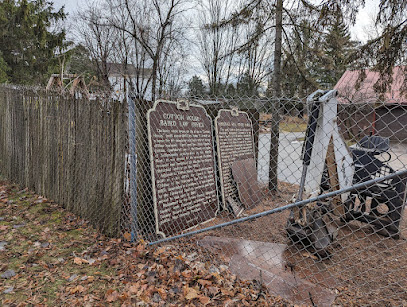
Wisconsin State Historical Marker 81: Decorah Peak
Explore Decorah Peak, a historical gem in Galesville, Wisconsin, where nature meets rich cultural heritage and breathtaking vistas.
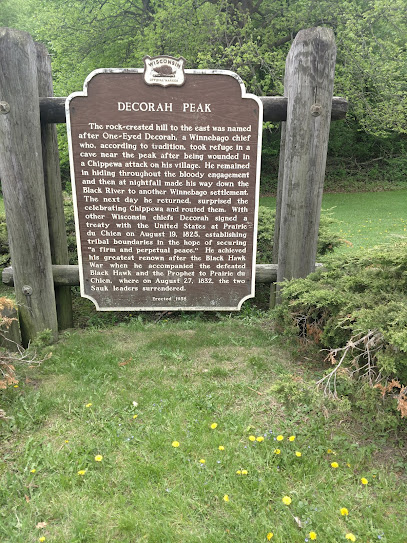
Wisconsin State Historical Marker 275: Bay View's Rolling Mill
Uncover the industrial heritage of Milwaukee at the Bay View's Rolling Mill, a historical landmark celebrating labor history and community spirit.

Wisconsin State Historical Marker #7: Village of Dover
Discover the Village of Dover, a historical landmark in Wisconsin that unveils the rich tapestry of the region's past amidst scenic beauty.
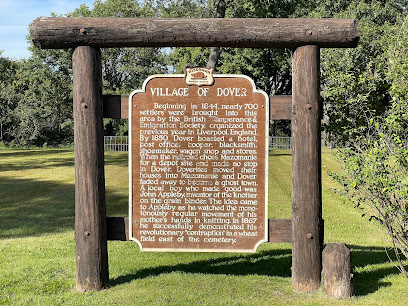
Wisconsin State Historical Marker 164: Yellow River
Explore the rich history and natural beauty at Wisconsin State Historical Marker 164: Yellow River, a must-visit landmark for all travelers.
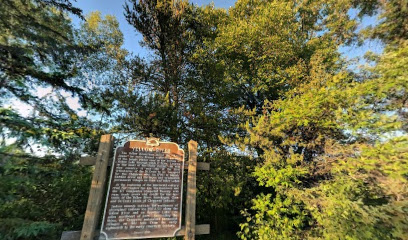
Unmissable attractions to see
The House on the Rock
Discover the architectural wonder and eclectic treasures of The House on the Rock, a unique tourist attraction nestled in Wisconsin's scenic hills.
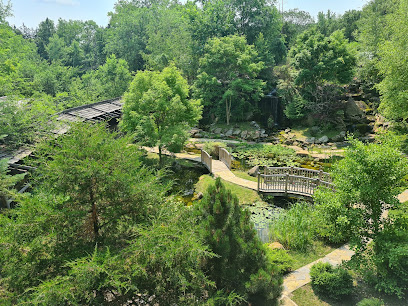
Cave of the Mounds
Discover the stunning beauty of the Cave of the Mounds, a natural wonder in Wisconsin featuring breathtaking geological formations and lush nature trails.
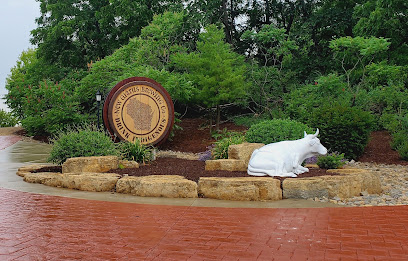
Riverside Park
Explore the natural beauty and cultural charm of Riverside Park, a serene escape along the Mississippi River in La Crosse, Wisconsin.
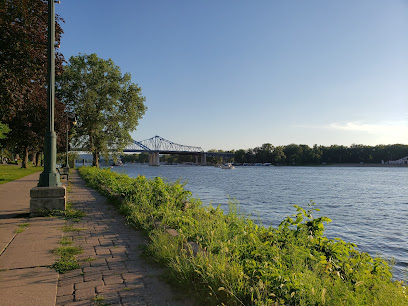
Governor Dodge State Park
Explore the vast beauty of Governor Dodge State Park in Wisconsin, a perfect destination for outdoor enthusiasts and nature lovers alike.
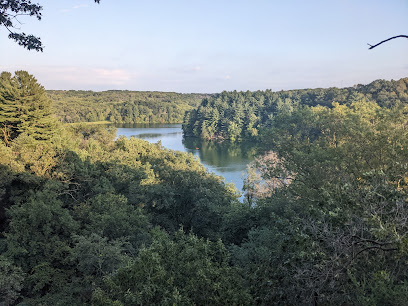
Circus World | A Wisconsin Historic Site
Experience the magic of the circus at Circus World in Baraboo, WI - a historic site celebrating the vibrant legacy of American circus culture.
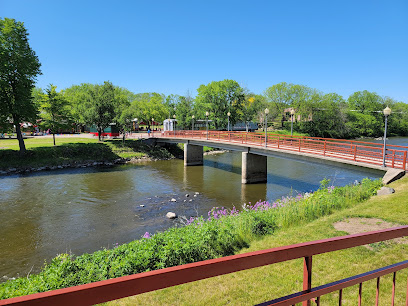
Grandad Bluff Park
Explore Grandad Bluff Park for stunning views, scenic trails, and a serene natural escape in La Crosse, Wisconsin.
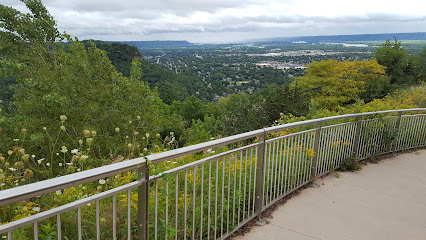
Effigy Mounds National Monument
Discover the ancient burial mounds and rich Native American heritage at Effigy Mounds National Monument, a serene escape in Iowa's natural beauty.
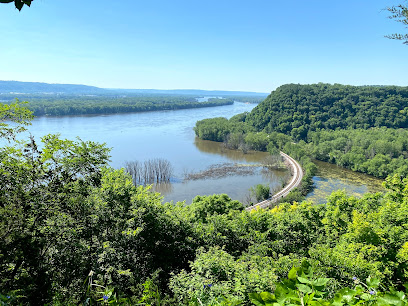
Wildcat Mountain State Park
Discover the enchanting Wildcat Mountain State Park in Wisconsin – a perfect escape for hiking, wildlife watching, and enjoying nature's splendor.
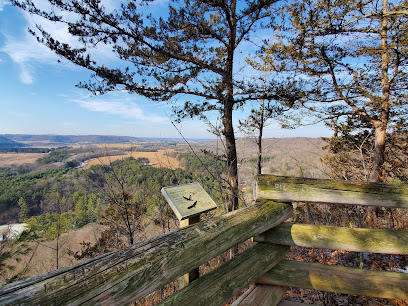
Perrot State Park
Discover the breathtaking landscapes and diverse wildlife at Perrot State Park in Trempealeau, Wisconsin, perfect for outdoor adventures year-round.
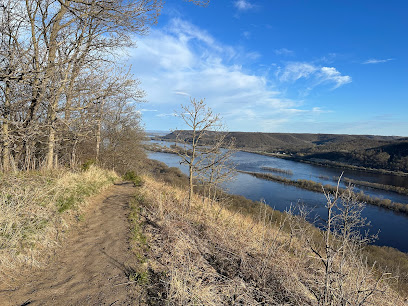
Children's Museum of La Crosse
Discover endless fun and educational experiences at the Children's Museum of La Crosse, where imagination knows no bounds.
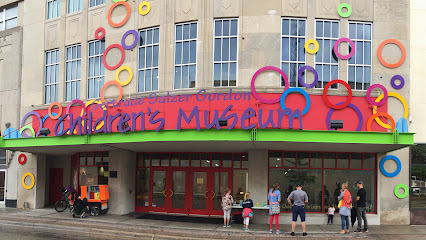
Taliesin Preservation: Frank Lloyd Wright Visitor Center
Explore the architectural brilliance of Frank Lloyd Wright at Taliesin Preservation, a historical landmark nestled in Wisconsin's beautiful countryside.
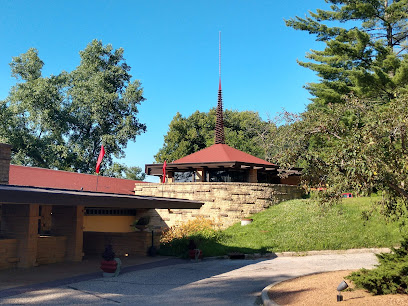
St. Feriole Island Park
Discover the beauty and tranquility of St. Feriole Island Park, a perfect blend of nature, history, and recreation along the Mississippi River.
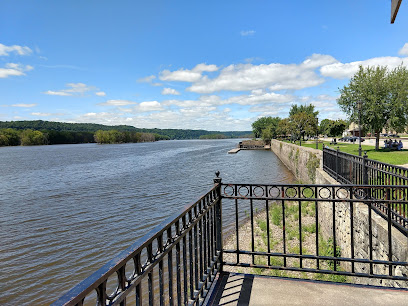
Lower Wisconsin State Riverway
Discover the stunning landscapes and diverse wildlife of the Lower Wisconsin State Riverway, a perfect blend of adventure and tranquility in Wisconsin's great outdoors.
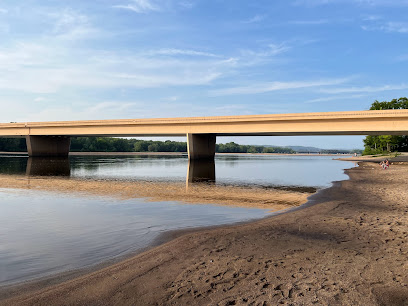
Mill Bluff State Park
Explore the breathtaking landscapes and unique sandstone formations of Mill Bluff State Park, a true gem in Wisconsin's natural heritage.
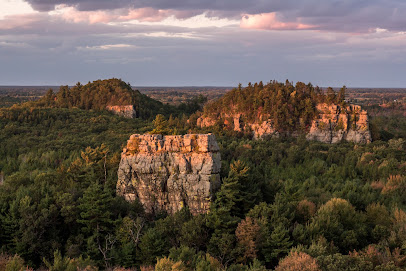
Shrine of Our Lady of Guadalupe
Explore the serene beauty and spiritual significance of the Shrine of Our Lady of Guadalupe in La Crosse, Wisconsin, a must-visit destination for travelers.
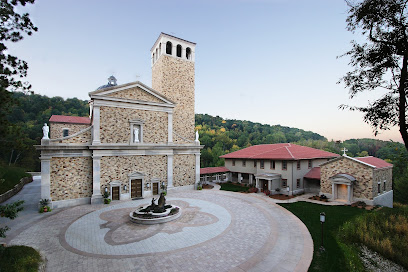
Essential places to dine
Pier 500
Discover Pier 500: A riverside American restaurant offering delectable cuisine and inviting ambiance in Hudson, Wisconsin.
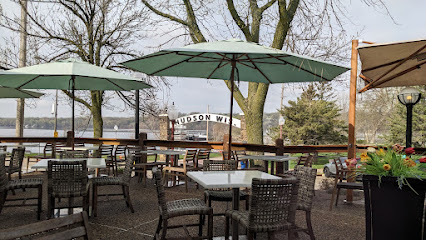
River's Bend
Experience exquisite steaks and scenic river views at River's Bend - Green Bay's premier dining destination.

Great River Roadhouse
Discover delicious handcrafted pizzas at Great River Roadhouse in De Soto, Wisconsin – your perfect pitstop along the Great River Road!
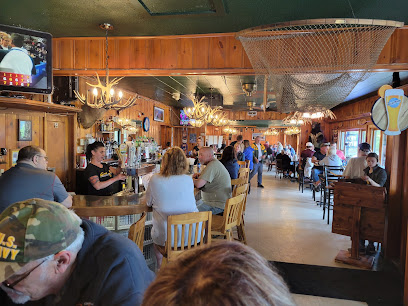
Sullivan's Supper Club
Experience exquisite fine dining at Sullivan's Supper Club with stunning river views and delectable seafood and steak offerings in Trempealeau.
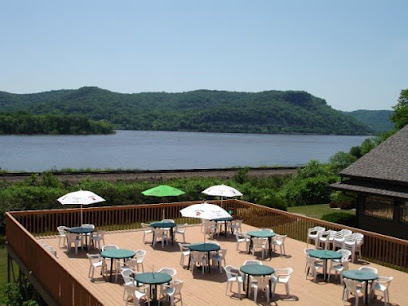
Waters Supperclub
Discover exceptional dining at Waters Supperclub in New London, where delicious cuisine meets stunning riverside views.
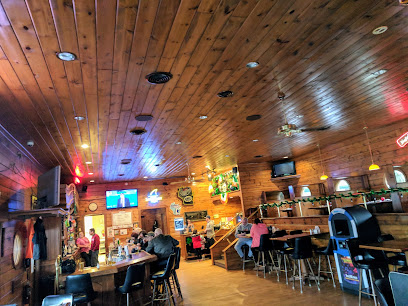
West Wind Supper Club
Savor American cuisine at West Wind Supper Club in River Falls—where taste meets tradition in an inviting atmosphere.
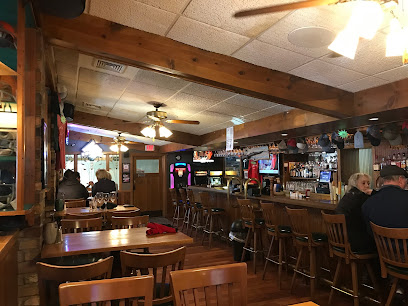
The Table on Main
Experience delightful American cuisine at The Table on Main in River Falls - perfect for breakfast lovers seeking local flavors.
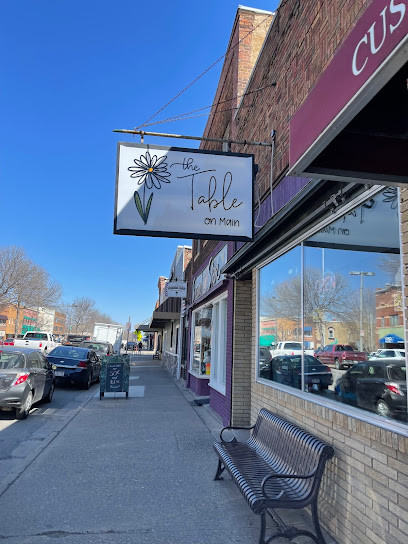
Barn Board Grill & Saloon
Discover hearty American cuisine at Barn Board Grill & Saloon in Roberts, WI - where rustic charm meets delicious flavors.

Vino in the Valley
Discover authentic Italian flavors paired with exquisite wines at Vino in the Valley amidst Wisconsin's breathtaking landscapes.
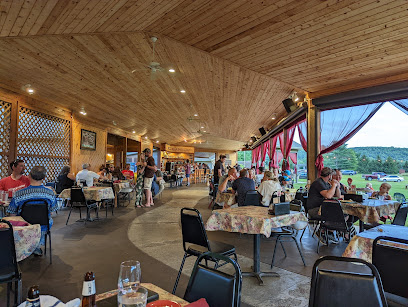
River Park Family Restaurant
Experience family-friendly dining at River Park Family Restaurant with delicious breakfast options in the heart of Sheboygan Falls.
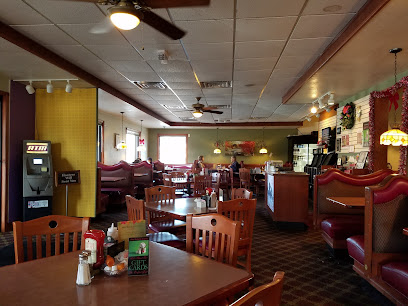
Prescott Roadhouse
Savor delicious American breakfasts at Prescott Roadhouse – where comfort meets flavor in every bite.
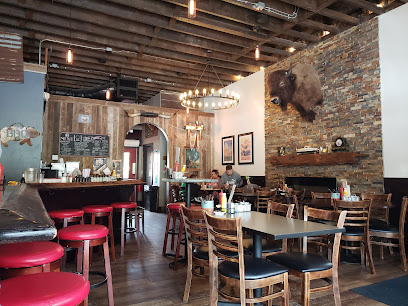
Two Rivers Lodge Bar & Grill
Discover the delightful flavors and vibrant atmosphere at Two Rivers Lodge Bar & Grill in Prescott, Wisconsin—a true American dining experience by the river.

Burnt Bridge Tavern
Discover Burnt Bridge Tavern: A cozy grill and pub in Conover offering delicious American cuisine and a vibrant sports bar atmosphere.
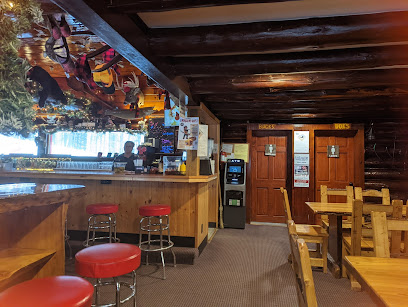
Rivers Edge Restaurant
Discover delightful breakfasts at Rivers Edge Restaurant in Saukville - where quality meets comfort along the riverside.
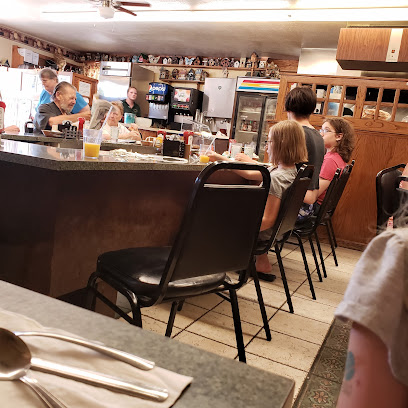
River Front Family Restaurant
Experience delightful family dining at River Front Family Restaurant in Fort Atkinson – where hearty breakfasts meet a warm, welcoming atmosphere.
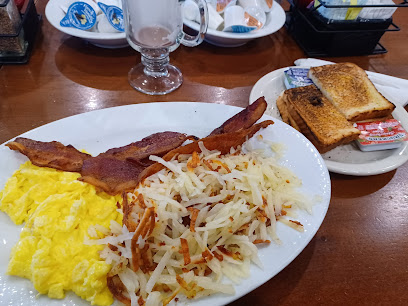
Markets, malls and hidden boutiques
Cabela's
Cabela's in Prairie du Chien: Your one-stop shop for all things outdoor, from fishing gear to camping essentials and hunting supplies.
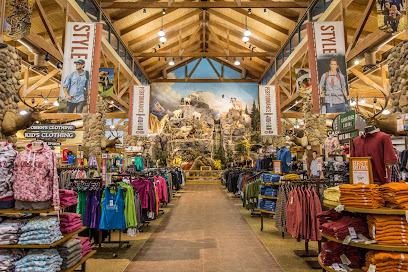
Cannery
Explore The Cannery in Prairie du Chien: A charming gift shop brimming with unique, locally crafted treasures perfect for every occasion.

J & R Military Surplus
Discover authentic military gear and outdoor essentials at J & R Military Surplus in De Soto, Wisconsin – a haven for adventurers and collectors.
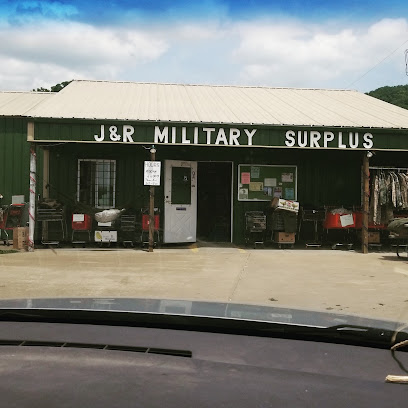
Something For Everyone
Explore the diverse offerings at Something For Everyone, the ultimate shopping destination in Prairie du Chien, Wisconsin.
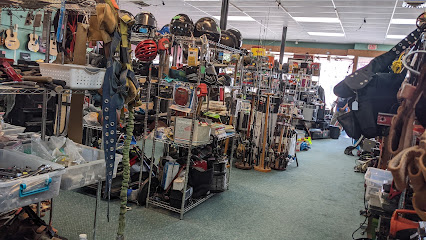
H
Uncover stylish headwear at Ferryville's charming hat shop, where fashion meets affordability in a delightful shopping experience.

Cheapo Depot & Fireworks Outlet
Explore Cheapo Depot & Fireworks Outlet in Ferryville, where unique finds and local favorites await you. A must-visit shop for tourists!
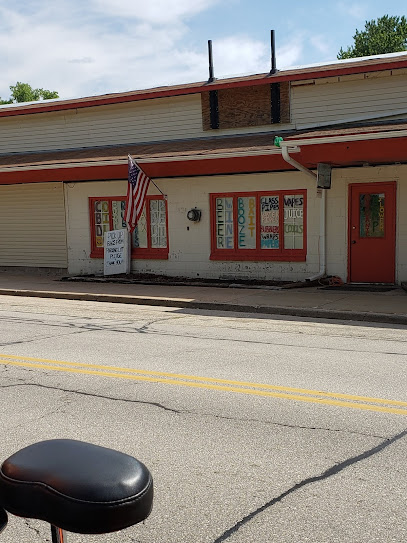
Check's Antique Shop
Explore a treasure trove of antiques and collectibles at Check's Antique Shop in Prairie du Chien, Wisconsin, where history comes alive.
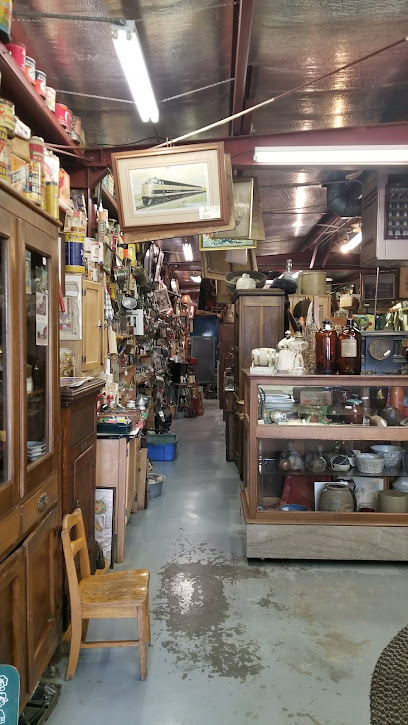
The Merchant General Store
Explore The Merchant General Store in Black River Falls - a charming gift shop filled with antiques, home goods, and unique souvenirs.
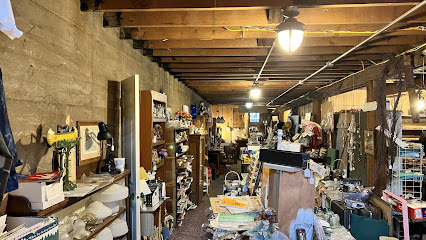
The Market on Blackhawk
Explore The Market on Blackhawk in Prairie du Chien for unique gifts and local artisan creations, a true shopping gem in Wisconsin.
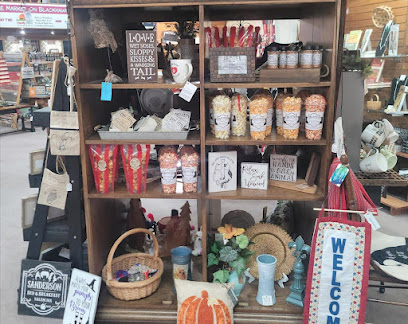
Sugar River Shoppe
Explore the charm of Sugar River Shoppe, New Glarus' premier gift shop filled with locally sourced treasures and unique finds.
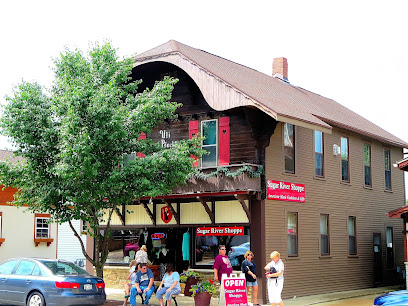
The Sweet Tooth
Experience the ultimate candy paradise at The Sweet Tooth, where every treat is a sweet memory waiting to be savored.

The Planted Tree Gallery & Gifts
Explore The Planted Tree Gallery & Gifts for unique local artistry and handcrafted treasures in the heart of Prairie du Chien, Wisconsin.
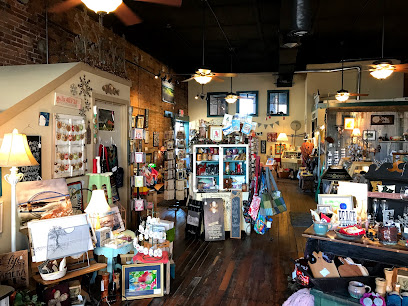
Ferryville Cheese and More
Discover the best of local cheese and snacks at Ferryville Cheese and More, your go-to convenience store and gourmet stop in Ferryville, WI.
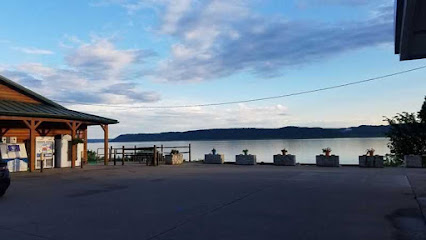
Tim's Cheese Finders-Keepers
Explore Tim's Cheese Finders-Keepers in Ferryville, WI - a whimsical toy store filled with nostalgic treasures and unique antiques waiting to be discovered.
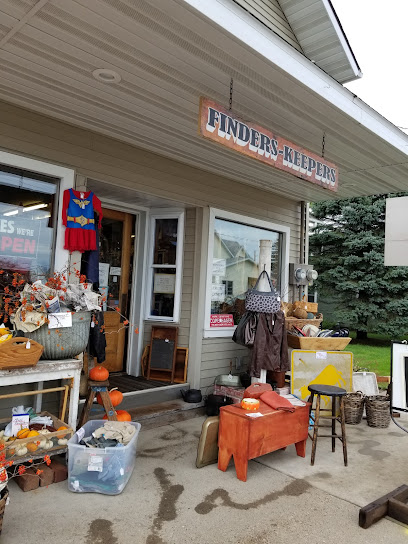
Couleecap Food Pantry and Bargain Boutique
Discover thrift treasures while supporting a vital community food pantry at Couleecap Food Pantry and Bargain Boutique in Prairie du Chien.
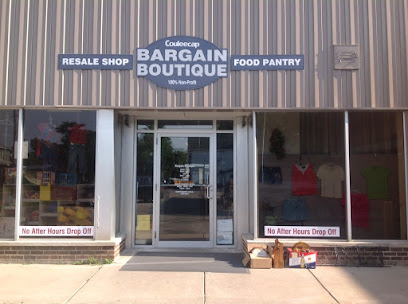
Essential bars & hidden hideouts
Great River Roadhouse
Savor the flavors of Wisconsin at Great River Roadhouse, where delicious pizza meets scenic river views in a cozy atmosphere.
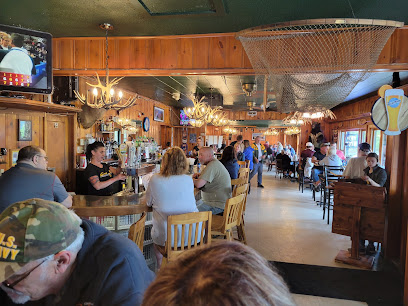
Fort Mulligan's Grillpub
Experience the charm of Fort Mulligan's Grillpub, where delicious meals and a cozy atmosphere await in the heart of Prairie du Chien.
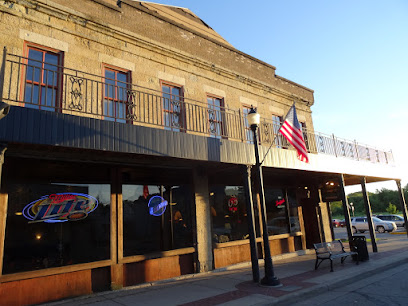
Eddie's Irish Pub
Experience the charm of Ireland at Eddie's Irish Pub, where traditional cuisine meets a lively atmosphere in Prairie du Chien.
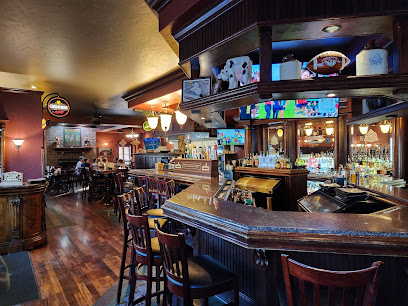
The Barn Restaurant
Discover The Barn Restaurant in Prairie du Chien for a delightful blend of rustic charm and modern American cuisine, perfect for any occasion.
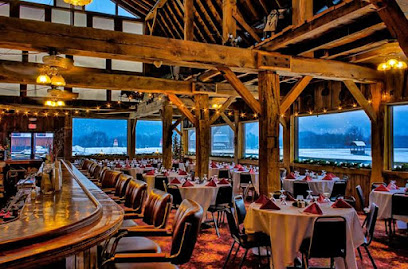
Spring Lake Inn
Discover the cozy charm of Spring Lake Inn, where delicious American cuisine meets a relaxing bar atmosphere in beautiful Eastman, Wisconsin.
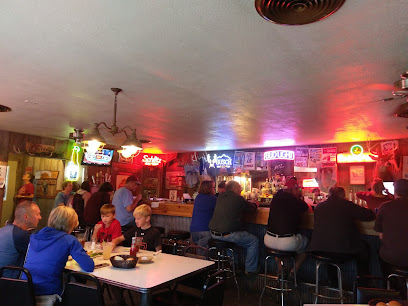
Wooden Nickel Saloon
Discover the Wooden Nickel Saloon in Ferryville, Wisconsin – your favorite grill and bar for hearty meals, craft drinks, and local camaraderie.
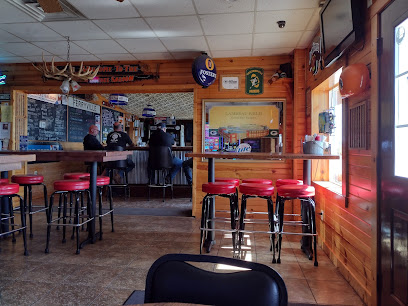
Winneshiek Bar & Grill
Discover the flavors of the Mississippi at Winneshiek Bar & Grill, where great food meets a lively atmosphere.
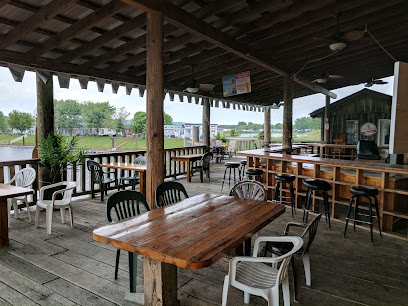
Pork's Bar
Enjoy delicious grilled dishes and refreshing drinks at Pork's Bar, the perfect riverside retreat in De Soto, Wisconsin.
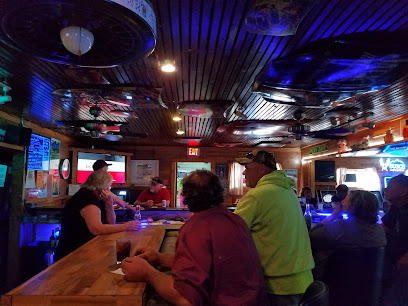
The Crooked Oar
Discover the charm of The Crooked Oar, a cozy bar in Prairie du Chien, offering local brews, delicious pub fare, and a friendly atmosphere.

The Blackhawk
Discover the lively atmosphere and great drinks at The Blackhawk, a top bar destination in Prairie du Chien, Wisconsin, perfect for nightlife seekers.
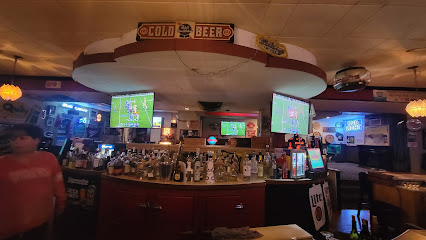
Backwater Bar & Grill
Discover the taste of Wisconsin at Backwater Bar & Grill, where local flavors meet stunning waterfront views in Prairie du Chien.
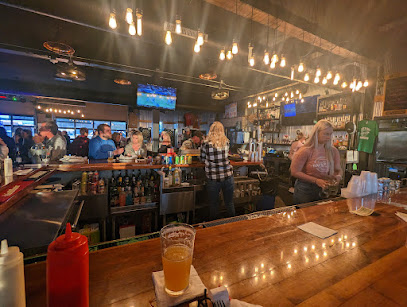
The Depot
Discover The Depot in Prairie du Chien, a riverside grill known for delicious local cuisine and stunning views, perfect for a relaxing dining experience.
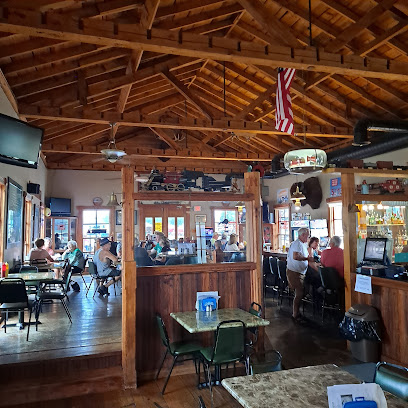
Bright Spot Tavern & Restaurant
Experience the warmth and flavors of Wisconsin at Bright Spot Tavern & Restaurant, a must-visit eatery in De Soto offering delicious pub fare and a friendly atmosphere.
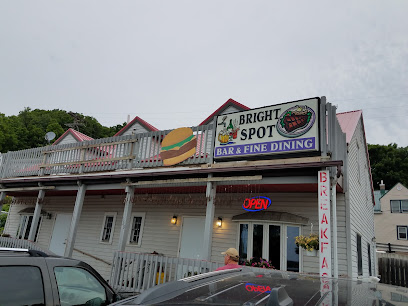
Swede's Swing Inn
Discover Swede's Swing Inn in Ferryville, a charming bar and restaurant offering local flavors and a warm atmosphere for tourists and locals alike.
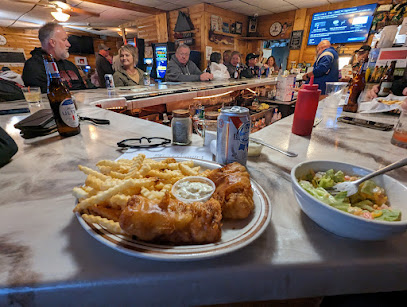
Bob's Bar
Experience the inviting atmosphere and affordable drinks at Bob's Bar, a local favorite in Prairie du Chien, Wisconsin.

Local Phrases about Great River Road
-
- HelloHowdy
[haʊ.di] - GoodbyeSee ya
[siː jə] - YesYep
[jɛp] - NoNah
[nɑː] - Please/You're welcomePlease/You're welcome
[pliːz/jʊr ˈwɛlkəm] - Thank youThanks
[θæŋks] - Excuse me/SorryPardon me
[ˈpɑrdn mi] - How are you?How ya doin'?
[haʊ jə ˈduɪn] - Fine. And you?Good. How 'bout you?
[ɡʊd. haʊ ˈbaʊt jə] - Do you speak English?Ya speak English?
[jə spiːk ˈɪŋɡlɪʃ] - I don't understandI don't get it
[aɪ doʊnt ˈəndərˌstænd]
- HelloHowdy
-
- I'd like to see the menu, pleaseCan I check out the menu?
[kæn aɪ ˈtʃɛk aʊt ðə ˈmɛnjuː] - I don't eat meatI don't do meat
[aɪ doʊnt duː mit] - Cheers!Cheers!
[ʧɪrz] - I would like to pay, pleaseI'll cover it, please
[aɪl ˈkʌvər ɪt pliːz]
- I'd like to see the menu, pleaseCan I check out the menu?
-
- Help!Help!
[hɛlp] - Go away!Get lost!
[ɡɛt lɔst] - Call the Police!Get the cops!
[ɡɛt ðə kɑps] - Call a doctor!Get a doc!
[ɡɛt ə dɑk] - I'm lostI'm turned around
[aɪm tɜrnd əˈraʊnd] - I'm illI'm under the weather
[aɪm ˈəndər ðə ˈwɛðər]
- Help!Help!
-
- I'd like to buy...I'm lookin' to buy...
[aɪm ˈlʊkɪn tʊ baɪ] - I'm just lookingJust browsin'
[ʤʌst ˈbraʊzɪn] - How much is it?How much?
[haʊ mʌʧ] - That's too expensiveThat's steep
[ðæts stip] - Can you lower the price?Can ya knock it down?
[kæn jə nɑk ɪt daʊn]
- I'd like to buy...I'm lookin' to buy...
-
- What time is it?What's the time?
[wɑts ðə taɪm] - It's one o'clockIt's one
[ɪts wʌn] - Half past (10)Half past (10)
[hæf pæst (ˈtɛn)] - MorningMornin'
[ˈmɔrnɪn] - AfternoonAfternoon
[ˌæftərˈnun] - EveningEvenin'
[ˈivnɪn] - YesterdayYest'day
[ˈjɛst.deɪ] - TodayToday
[təˈdeɪ] - TomorrowTomorrer
[ˈtəˌmɔr.oʊ] - 1One
[wʌn] - 2Two
[tuː] - 3Three
[θriː] - 4Four
[fɔːr] - 5Five
[faɪv] - 6Six
[sɪks] - 7Seven
[ˈsɛvən] - 8Eight
[eɪt] - 9Nine
[naɪn] - 10Ten
[tɛn]
- What time is it?What's the time?
-
- Where's a/the...?Where's the...?
[wɛərs ðə] - What's the address?What's the addy?
[wɑts ðə ˈædi] - Can you show me (on the map)?Can ya show me (on the map)?
[kæn jə ʃoʊ mi (ɒn ðə mæp)] - When's the next (bus)?When's the next (bus)?
[wɛnz ðə nɛkst (bʌs)] - A ticket (to ....)A ticket (to ....)
[ə ˈtɪkɪt (tu ....)]
- Where's a/the...?Where's the...?
History of Great River Road
-
Long before European settlers arrived, the lands along the Great River Road in Wisconsin were inhabited by various Native American tribes, such as the Ho-Chunk, Dakota, and Ojibwe. These tribes lived off the rich resources provided by the Mississippi River, including fish, game, and fertile land for agriculture. The river was also a vital transportation route for trade and communication among different tribes.
-
In the 17th century, French explorers and fur traders, such as Father Jacques Marquette and Louis Joliet, traveled through the Mississippi River region, including the area that is now Great River Road in Wisconsin. The French established trading posts and forts, fostering trade relationships with Native American tribes. The fur trade became a significant economic activity, with beaver pelts being highly sought after in European markets.
-
During the early 19th century, the discovery of lead deposits in southwestern Wisconsin led to a mining boom. The Great River Road became a critical transportation route for miners and supplies. Towns like Galena, Illinois, and Potosi, Wisconsin, flourished as lead mining centers. The influx of settlers and miners contributed to the region's growth and the development of infrastructure along the river.
-
In 1832, the Black Hawk War erupted as a result of tensions between the United States government and Native American tribes led by Chief Black Hawk of the Sauk and Fox tribes. The conflict took place in the vicinity of the Great River Road, with significant battles occurring near present-day Prairie du Chien. The war ended with the defeat of Black Hawk's forces, leading to the forced relocation of Native American tribes and opening up the region for further settlement by European Americans.
-
The advent of steamboats in the early 19th century revolutionized transportation along the Mississippi River. The Great River Road became a bustling corridor for steamboat traffic, facilitating the movement of goods and people. Towns along the river, such as La Crosse and Prairie du Chien, grew as important river ports. The steamboat era brought economic prosperity and cultural exchange to the region.
-
During the Civil War, the Great River Road in Wisconsin played a role in the Underground Railroad, a network of secret routes and safe houses used by enslaved African Americans to escape to free states and Canada. Abolitionists in the region provided assistance to freedom seekers, helping them cross the Mississippi River into Wisconsin. This period highlighted the area's commitment to the abolitionist cause and its role in the broader fight for freedom and equality.
-
In the mid-20th century, efforts were made to preserve and promote the scenic and historical significance of the Great River Road. The route was designated as a National Scenic Byway, highlighting its natural beauty, cultural heritage, and historical importance. The Great River Road Scenic Byway attracts tourists from around the world, offering a picturesque journey through the heart of American history along the Mississippi River.
Great River Road Essentials
-
Great River Road in Wisconsin can be accessed from multiple points along its route. The nearest major airport is Minneapolis-Saint Paul International Airport (MSP) in Minnesota, approximately 90 miles from the northern end of the route. Alternatively, Milwaukee Mitchell International Airport (MKE) is about 200 miles from the southern end. From either airport, you can rent a car or take a bus to reach the Great River Road. Major highways such as I-90 and I-94 provide easy access to the road.
-
The best way to explore the Great River Road is by car. The scenic byway stretches for around 250 miles, and having your own vehicle allows you to stop at various attractions along the route. Bicycling is another popular option, with some sections offering dedicated bike paths. Public transportation options are limited, but local buses and shuttles are available in some towns. Car rentals and bike rentals can be found in larger towns along the route.
-
The official currency is the US Dollar (USD). Credit and debit cards are widely accepted, but it is advisable to carry some cash, especially for smaller establishments and rural areas. ATMs are available in most towns along the route. Be sure to inform your bank of your travel plans to avoid any issues with card transactions.
-
The Great River Road is generally safe for tourists. However, standard precautions should be taken. Avoid leaving valuables in your car and be cautious in less populated areas at night. While there are no specific high-crime areas targeting tourists, it's always best to stay vigilant and aware of your surroundings. Lock your vehicle and keep an eye on your belongings, especially in crowded tourist spots.
-
In case of emergency, dial 911 for immediate assistance. Hospitals and medical facilities are available in larger towns along the route, such as La Crosse and Prairie du Chien. It is recommended to have travel insurance that covers medical emergencies. For minor health issues, pharmacies are available in most towns where you can purchase over-the-counter medications.
-
Fashion: Do dress comfortably for the weather and the activities you'll be doing. Casual attire is generally acceptable. Religion: Do respect local customs, especially if visiting religious sites. Public Transport: Do plan your routes in advance, as public transportation is limited. Don't expect frequent service. Greetings: Do greet people with a friendly 'hello' or a handshake. Eating & Drinking: Do try local specialties and be polite in restaurants. Don't forget to tip, typically around 15-20% of the bill.
-
To experience Great River Road like a local, consider visiting during the fall when the foliage is at its peak. Stop by local farmers' markets for fresh produce and regional specialties. Engage with locals at small-town diners and bars to learn about the area's history and culture. Don't miss the numerous state parks and historic sites along the route, such as Perrot State Park and Villa Louis. For a unique experience, take a riverboat cruise on the Mississippi River.
Trending Landmarks in Great River Road
-
Perrot State Park
-
Wyalusing Hardwood Forest
-
HIGHGROUND VETERANS MEMORIAL HISTORICAL MARKER #300
-
Great River Road Visitor and Learning Center
-
Rapides des Peres - Voyageur Park Historical Marker #266
-
First Capitol Historic Site
-
Great River Road Inns
-
Spirit of the Rivers Monument
-
Wisconsin State Historical Marker #15: Old Stockade Site
-
Great River Road Interpretive Center
-
Wisconsin State Historical Marker 239: Heritage Hill State Park
-
Wisconsin State Historical Marker 81: Decorah Peak
-
Wisconsin State Historical Marker 275: Bay View's Rolling Mill
-
Wisconsin State Historical Marker #7: Village of Dover
-
Wisconsin State Historical Marker 164: Yellow River
Nearby Cities to Great River Road
-
Things To Do in Winona
-
Things To Do in Wisconsin Dells
-
Things To Do in Dubuque
-
Things To Do in Eau Claire
-
Things To Do in Waterloo
-
Things To Do in Madison
-
Things To Do in Mason City
-
Things To Do in Cedar Rapids
-
Things To Do in Wausau
-
Things To Do in Iowa City
-
Things To Do in Saint Paul
-
Things To Do in Oshkosh
-
Things To Do in Rockford
-
Things To Do in Davenport
-
Things To Do in Minneapolis


